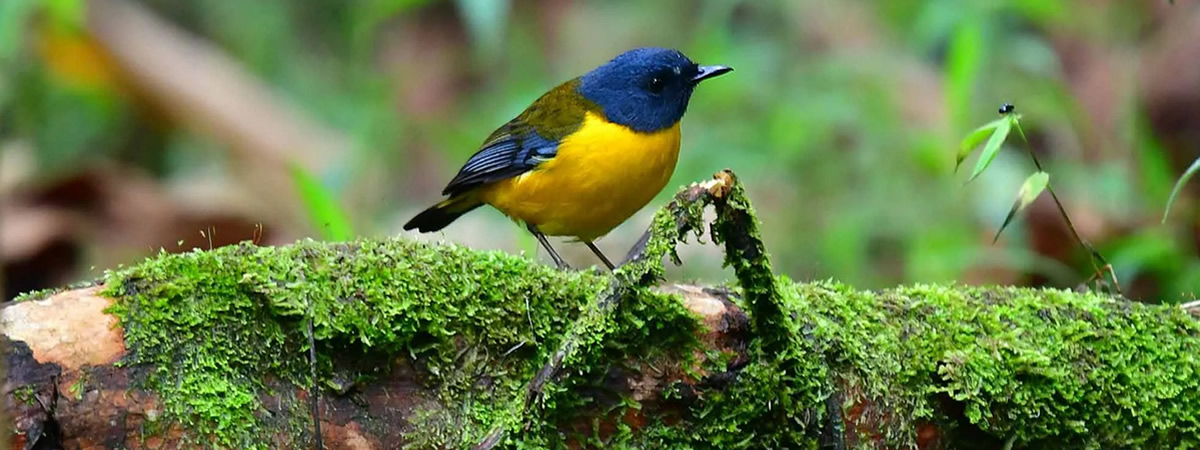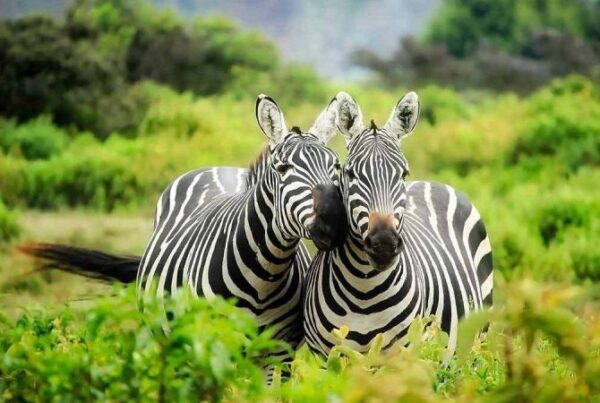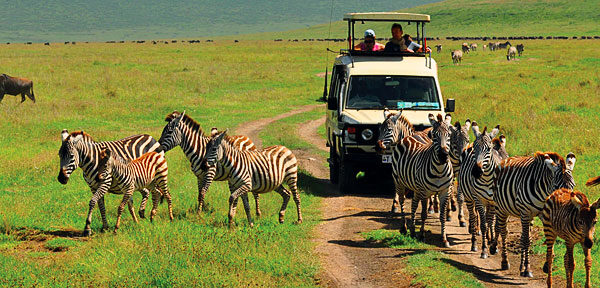Top 10 Experiences: Mgahinga Gorilla National Park Seasonal Guide for Birders
Where the Skies Sing with Life
Tucked away in the extreme southwest corner of Uganda lies a mystical wilderness where mountains pierce the clouds, bamboo forests whisper with the wind, and vibrant birdcalls echo through the valleys. Mgahinga Gorilla National Park, though smaller than many of Uganda’s protected areas, is a sanctuary of unmatched richness for birders. Its diverse habitats—ranging from montane forests to alpine zones—create a paradise where birdlife flourishes in every season.
For birdwatchers, Mgahinga is not simply a destination but a living stage where some of Africa’s most fascinating avian performers can be seen against dramatic volcanic backdrops. With more than 180 recorded bird species, including Albertine Rift endemics, the park offers opportunities that shift with the turning of the seasons. This seasonal guide unveils ten experiences that birders should not miss, ensuring that every visit—whether in the lush rains or the bright dry months—becomes a deeply rewarding adventure.
January to March: The Season of Clear Skies and Vibrant Song
At the start of the year, Mgahinga greets visitors with cool mornings and clear views of the Virunga volcanoes. For birders, these months bring an abundance of activity, as the park resonates with the calls of species marking their territories. Forest trails reveal Rwenzori turacos, their crimson wings flashing vividly as they glide from branch to branch.
The dry conditions make trekking easier, and birders often find themselves rewarded with sightings of the Dusky Crimsonwing, one of the most sought-after Albertine Rift endemics. The interplay of bright sunshine and lush greenery sets the perfect stage for bird photography, allowing birders to capture species in striking detail. For groups, this season creates harmony, as sightings are frequent and energy levels are sustained without the challenge of heavy rain.
April to May: The Reign of the Rains
As April arrives, so do the rains, transforming Mgahinga into a carpet of green. For birders, this is a season of patience and resilience. The trails grow slippery, and mist often rolls through the valleys, yet the reward lies in the sheer abundance of life. Birds respond to the rains with heightened breeding activity, making their plumage brighter and their calls more pronounced.
The elusive Kivu Ground Thrush is often encountered during these months, and the Mountain Yellow Warbler becomes a familiar sight in the forest undergrowth. Although the weather may test determination, this season is one of discovery, as rarer species emerge, less disturbed by heavy tourist numbers. For serious birders, April and May offer unmatched opportunities to deepen field records and observe behaviors that remain hidden during drier months.
June to August: The Golden Season for Birders
With the rains subsiding, Mgahinga ushers in its most popular birding season. Clear skies, moderate temperatures, and manageable trails combine to create near-perfect conditions. Birders find the forests alive with movement, as both resident species and migratory birds fill the canopy with activity.
This period often reveals the striking Blue-headed Sunbird, feeding actively among flowering plants, while the Collared Apalis moves nimbly through the mid-canopy. Treks to higher altitudes, though challenging, reward birders with sightings of the Scarlet-tufted Sunbird, which frequents the alpine zones near the summit of Mount Gahinga and Mount Sabinyo. The combination of accessibility and abundance makes this season ideal for both casual observers and professional ornithologists.
September to November: The Return of Rains and Rare Encounters
As the short rains arrive, Mgahinga shifts once more into a realm of mist and renewal. Birders visiting during these months are greeted by fresh foliage and heightened breeding activity, particularly among smaller forest birds. The rains, though less intense than those in April, still demand careful preparation, yet they enrich the birding experience with sightings of species less commonly observed in other months.
The Ruwenzori Batis, with its sharp black-and-white plumage, is often encountered in the mid-altitude forests, while the White-starred Robin adds a splash of color to the undergrowth. The quieter tourist season ensures that birders enjoy more intimate encounters with both the birds and the solitude of the park, making this time particularly attractive for those seeking a more meditative experience.
December: A Month of Celebration and Abundance
December brings with it the drier season once again, coinciding with holiday periods when many travelers make their way to Mgahinga. For birders, this is a time when the park becomes a festive stage, with mixed flocks of species moving together in search of food. Trails are easily navigated, and opportunities for photography abound.
Notable sightings often include the Olive Pigeon perched in the high branches and the Yellow-crowned Canary singing cheerfully from open glades. The vibrancy of December birding, combined with the festive energy of the season, makes it a particularly rewarding time for groups and families seeking shared experiences in the wild.
Trekking Through Habitats: From Bamboo to Alpine Zones
Across all seasons, Mgahinga’s unique habitats shape the birding experience. The bamboo forests are home to the Dusky Turtle Dove and the Striped Breasted Tit, while the montane woodlands harbor rarities like the Red-throated Alethe. Higher up, alpine vegetation provides opportunities to spot species rarely seen elsewhere, such as the Lagden’s Bush-shrike.
For birders, each habitat becomes a world of its own, with seasonal changes influencing which species dominate the scene. This variety ensures that no two visits to Mgahinga are ever the same, as the interplay of weather, vegetation, and migration constantly reshapes the avian tapestry.
The Role of Seasons in Migratory Patterns
One of the great rewards of birding in Mgahinga lies in observing not just resident species but also migratory patterns. During certain months, Palearctic migrants join the resident birdlife, creating moments of surprise for keen observers. Species such as the Black Kite and European Bee-eater make seasonal appearances, adding diversity to checklists.
The timing of these migrations highlights the importance of planning visits with seasonal awareness. Birders who align their trips with migratory windows not only increase their chances of varied sightings but also gain deeper insight into the interconnectedness of global ecosystems.
Cultural Layers: Birding Beyond Birds
While the primary attraction may be the birds themselves, Mgahinga also offers cultural dimensions that enrich the birding experience. The Batwa community, once forest dwellers, share knowledge of the land that deepens the understanding of bird habitats. Local guides, often raised in the shadow of the Virunga volcanoes, bring cultural narratives that connect bird behavior to broader ecological and social stories.
Seasonal festivals and community markets in the Kisoro area add another layer to birding trips, as travelers find themselves immersed not only in the calls of birds but also in the rhythms of local life. This fusion of culture and ecology ensures that birding at Mgahinga is never a narrow pursuit but part of a broader journey into heritage and identity.
Practical Insights for Seasonal Birding
Though each season brings distinct advantages, preparation remains the thread that unites successful birding experiences. Dry months favor lightweight clothing and wide-brimmed hats, while rainy months require waterproof boots and ponchos. Insect repellent, binoculars, and cameras are essentials regardless of the time of year.
Group dynamics also play an important role, as the pace and enjoyment of birding are determined by collective preparedness. Guides recommend early starts, as mornings often present the most active bird activity. Regardless of season, patience, attentiveness, and respect for the environment remain the core essentials for birders seeking meaningful encounters.
Seasons of Endless Song
Every season at Mgahinga Gorilla National Park unveils a different chapter in the story of birdlife. From the vibrant calls of January to the lush breeding activity of April, from the golden clarity of June to the festive abundance of December, birders are assured that their journey will always reveal something extraordinary. The park is not merely a destination but a timeless stage where the skies themselves seem to sing.
For those eager to transform birdwatching dreams into reality, careful planning with a trusted safari expert is the key to unlocking these seasonal wonders. To ensure that every trek, every sighting, and every moment is guided with expertise, travelers are encouraged to book their African adventures with WildHorn Africa. With their commitment to detail and authenticity, each season at Mgahinga becomes not just a visit, but an unforgettable story etched in the memory of every birder.





 WildHorn Africa – Authentic and unforgettable tours across Africa, guided by local experts who know the land, wildlife, and culture best.
WildHorn Africa – Authentic and unforgettable tours across Africa, guided by local experts who know the land, wildlife, and culture best.


